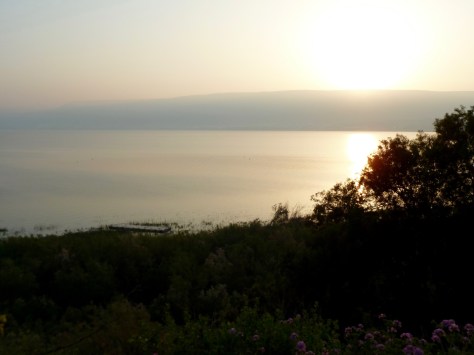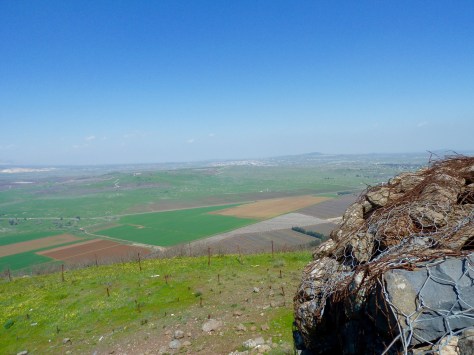A lot gets packed into our eighth grade trip to Israel. After four nights in Jerusalem, two nights in the Negev, and three nights on the Kinneret, the trip staff were exhausted. Built into the trip was a weekend with host families, usually students’ relatives or family friends. For staff, this meant two nights to choose anywhere in Israel to stay and just relax. One of my carpool friends was also a trip chaperone and we chose to spend the weekend in Tel Aviv; it was nothing less than glorious.
With the kids, we stopped in Tel Aviv twice over the course of the trip: Once to eat falafel and hang out in a park before visiting the Olympic Museum, which was entertaining for the kids and a lovely display of Zionism, and once to go to the beach. Suffice it to say that Tel Aviv (and perhaps anything) with kids is completely different than with adults.
After traveling by bus with a group of students also staying in and around Tel Aviv, we were free! We dropped our bags at the hotel and headed straight to Nachlat Binyamin, the artists’ market where, back in 2007, my parents bought a fruit plate that still sits on their kitchen counter and I bought a pair of purple earrings that I wore every single day until they turned green. (Those earrings are the reason that I chose purple studs when I pierced the second hole in my right ear.) I didn’t buy anything this time, but it was still fun to look around.
From there, hungry, in the mood for shakshuka, and still in need of gifts, we wandered Shuk HaCarmel, the most famous of Tel Aviv’s markets. As readers of this blog know, I adore markets. I love food and smells and flavors. I love the dedication of the vendors, the passionate bargaining of customers, and the speed of each transaction. I love the crowds and how markets are universally loud, frenetic, and a true delight for all the senses.
This particular market area of Tel Aviv is also a great spot for really neat street art. Shout out to my weekend partner-in-crime for her patience every time I said, “Wait, need a picture.”
Truth be told, however, we spent most of our weekend just sitting on the beach. I’m generally really bad at sitting but that’s all my body wanted to do. Sometimes we sat with food or drinks and sometimes we just sat and watched the water. We met up with a friend and some friends of friends and had ourselves a lovely time.
In addition to a great beach atmosphere, Tel Aviv also has a great restaurant and bar scene. On recommendation from one of our trip guides who lives in Tel Aviv, we went to Four One Six, a vegan restaurant that exceeded all expectations. After a few minutes of talking to the owner, we made a New York connection – he and his twin brother, the head chef, are from Brooklyn and opened the restaurant together a few months ago. He had previously worked at Candle 79, a phenomenal vegan restaurant that was blocks away from my Upper East Side apartment for the month that I lived there. The owner was really friendly and told us that he and his brother are working to challenge the food scene in Tel Aviv by introducing delicious vegan food that highlights what vegan can eat rather than what they can’t. Sounds a little like Candle 79! (And Vedge in Philadelphia, which I also highly recommend.) The owner dropped off a plate of chocolates and stopped back to ask if we’d figured out the flavors. Delicious isn’t a flavor but that’s what they were.
Other food highlights from the weekend include shakshuka, which we didn’t find at Shuk HaCarmel but ate outside at a sidewalk bakery/café, and burekas, which we also enjoyed while sitting outside. I could eat nothing but Israeli food every day for the rest of my life and never get bored. Every meal, including breakfast, is full of various types of fresh salads and I just love it.
After dinner, we met up with our guide, his girlfriend, and a few other friends at Dizzy Frishdon, a great bar with outdoor seating, several indoor bar areas, a table with swings instead of chairs, and a few rooms of normal tables and chairs. It was a really lovely evening to sit outside (are you noticing a theme?) and enjoy just being in Tel Aviv and watching the nightlife all around us. Our guide’s friend is a part owner of the bar and that came with food and drinks perks, which was a lot of fun.
Overall, it was an incredibly relaxing weekend and exactly what we needed to prepare for the final two nights of the trip back in Jerusalem. It actually ended up being two and a half nights after a seven-hour flight delay, so it’s a good thing that we were relaxed and rejuvenated. Beautiful beaches, beautiful food, and beautiful people have a way of doing that.




































































































